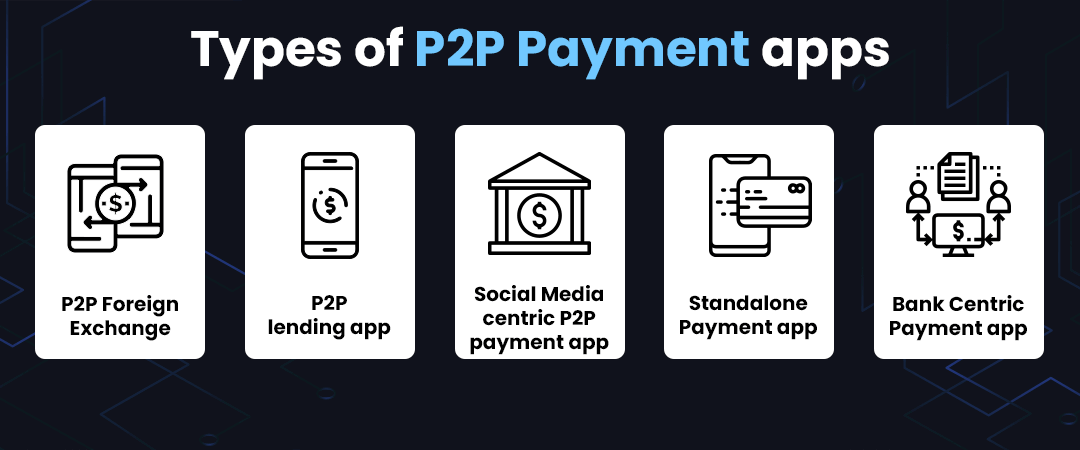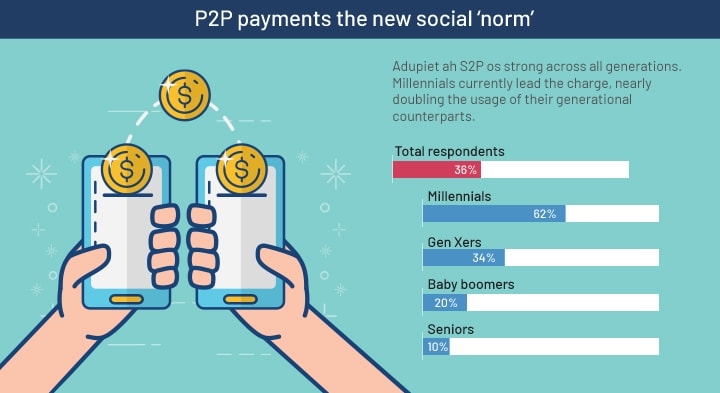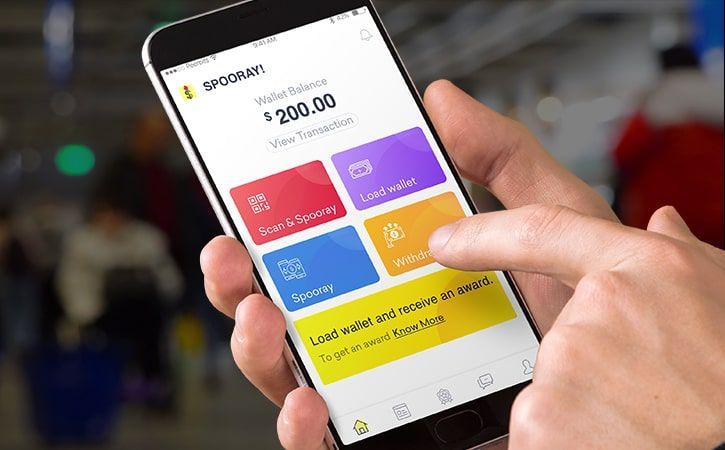Peer-to-peer payment apps have revolutionized digital transactions, empowering individuals to send and receive money instantly, conveniently, and securely. These apps have disrupted traditional banking methods, offering a myriad of advantages that cater to the evolving needs of today’s consumers.
From seamless peer-to-peer transfers to innovative features like social integration and loyalty programs, P2P payment apps have transformed the way we manage our finances. They have also played a crucial role in promoting financial inclusion, enabling individuals without traditional bank accounts to participate in the digital economy.
Peer-to-Peer Payment Apps

Peer-to-peer (P2P) payment apps enable individuals to send and receive money directly from their mobile devices or computers, without the involvement of traditional financial institutions like banks. These apps offer convenience, speed, and often lower fees compared to traditional banking methods.
Key features of P2P payment apps include:
- Mobile or web-based platforms
- Instant or near-instant fund transfers
- Low transaction fees
- User-friendly interfaces
- Security measures to protect user data
Advantages of P2P Payment Apps
- Convenience:P2P apps allow users to make payments from anywhere, at any time.
- Speed:Transactions are processed quickly, often in real-time.
- Lower fees:P2P apps typically charge lower transaction fees than banks.
- Social features:Some P2P apps offer social features, such as the ability to request and split payments.
Disadvantages of P2P Payment Apps
- Security concerns:P2P apps may not have the same level of security as banks.
- Limited functionality:P2P apps may not offer all the features of traditional banking accounts.
- Transaction limits:Some P2P apps have limits on the amount of money that can be sent or received.
Market Landscape and Competition
The peer-to-peer (P2P) payment app market is rapidly growing, with major players such as Venmo, PayPal, and Zelle dominating the space. Venmo, owned by PayPal, is the most popular P2P payment app in the United States, with over 83 million active users.
PayPal is a global leader in digital payments, with over 400 million active users worldwide. Zelle, a consortium of major banks, is also a popular P2P payment app in the United States.
The competitive landscape in the P2P payment app market is intense, with each player offering unique features and strategies to attract users. Venmo focuses on social features, allowing users to share payments with friends and family. PayPal emphasizes security and reliability, offering a wide range of payment options and fraud protection.
Zelle focuses on speed and convenience, allowing users to send and receive money instantly.
Key Differentiators
The key differentiators among P2P payment apps include:
- Social features:Some P2P payment apps, such as Venmo, allow users to share payments with friends and family, add comments to payments, and view each other’s transaction history.
- Security:P2P payment apps use a variety of security measures to protect users’ financial information, such as encryption, fraud detection, and two-factor authentication.
- Speed:Some P2P payment apps, such as Zelle, offer instant money transfers, while others may take a few days to process payments.
- Fees:Some P2P payment apps charge fees for certain transactions, such as sending money to a debit card or making international payments.
User Experience and Features

Peer-to-peer (P2P) payment apps have revolutionized the way people send and receive money, offering a convenient, secure, and user-friendly experience. The typical user journey involves downloading the app, creating an account, linking a payment method, and initiating a transaction.
One of the key strengths of P2P payment apps is their ease of use. The interfaces are typically intuitive, with clear instructions and simple navigation. Users can easily add contacts, enter payment amounts, and send money with just a few taps or clicks.
Additionally, many apps offer features such as auto-complete and predictive text to streamline the process further.
Convenience is another major advantage of P2P payment apps. They allow users to send and receive money instantly, regardless of their location or the time of day. This is particularly useful for situations where traditional methods, such as cash or checks, are impractical or unavailable.
Security is paramount in the realm of financial transactions, and P2P payment apps employ robust measures to protect user data and funds. These measures include encryption, fraud detection systems, and multi-factor authentication. Some apps also offer additional security features, such as the ability to freeze or cancel transactions in case of unauthorized access.
Innovative Features
Beyond the core functionality of sending and receiving money, many P2P payment apps offer a range of innovative features to enhance the user experience.
- Social integration:Some apps allow users to connect with friends and family through social media platforms, making it easy to split bills, share expenses, and send gifts.
- Budgeting tools:Certain apps offer budgeting features that help users track their spending, set financial goals, and stay on top of their finances.
- Loyalty programs:Many apps have loyalty programs that reward users for frequent usage, offering discounts, cashback, or other incentives.
Security and Fraud Prevention: Peer-to-peer Payment Apps
Peer-to-peer payment apps employ robust security measures to safeguard user data and transactions. These include encryption, tokenization, and multi-factor authentication. Additionally, many apps use fraud detection systems that monitor transactions for suspicious activity and block unauthorized access.
Encryption and Tokenization
Encryption scrambles data so that it can only be decrypted by authorized parties. P2P payment apps use encryption to protect user information, such as names, addresses, and account numbers, during transmission and storage. Tokenization replaces sensitive data with a unique token that can be used for transactions without exposing the actual data.
Multi-Factor Authentication
Multi-factor authentication (MFA) requires users to provide multiple forms of identification before accessing their accounts. This typically involves a combination of something the user knows (e.g., a password), something the user has (e.g., a smartphone), and something the user is (e.g., a fingerprint).
MFA makes it more difficult for unauthorized users to gain access to accounts, even if they have stolen a password.
Fraud Detection Systems
Fraud detection systems use machine learning and other advanced techniques to analyze transaction data and identify suspicious activity. These systems can detect patterns that indicate fraud, such as unusual spending patterns or attempts to access accounts from multiple locations. When suspicious activity is detected, the system can block the transaction and notify the user.
Regulatory and Compliance Considerations

Peer-to-peer (P2P) payment apps operate within a complex regulatory landscape that varies across jurisdictions. These apps must adhere to a range of frameworks and compliance requirements to ensure the safety and integrity of their services.
Regulations governing P2P payment apps typically focus on:
- Consumer protection
- Anti-money laundering (AML) and counter-terrorism financing (CTF)
- Data privacy and security
Impact of Regulations, Peer-to-peer payment apps
Regulations can significantly impact the development and operation of P2P payment apps:
- Compliance costs:Apps must invest in resources to comply with regulations, which can increase operating expenses.
- Innovation restrictions:Regulations may limit the types of products and services that P2P payment apps can offer.
- Market entry barriers:Stringent regulations can make it difficult for new entrants to compete in the P2P payment market.
Future Trends and Innovations

The peer-to-peer (P2P) payment app industry is constantly evolving, with new trends and innovations emerging all the time. Some of the most notable trends include:
- The rise of mobile payments:Mobile payments are becoming increasingly popular, as they are convenient and easy to use. P2P payment apps are well-positioned to take advantage of this trend, as they offer a mobile-first experience.
- The growth of cross-border payments:Cross-border payments are becoming increasingly common, as people and businesses become more globalized. P2P payment apps can make cross-border payments easier and more affordable.
- The adoption of new technologies:New technologies, such as blockchain and artificial intelligence (AI), are being adopted by P2P payment apps. These technologies can help to improve the security, efficiency, and convenience of P2P payments.
These trends are likely to continue to shape the P2P payment app industry in the years to come. As new technologies emerge and consumer behavior changes, P2P payment apps will need to adapt in order to remain competitive.
The Future of P2P Payments
The future of P2P payments is bright. As more and more people adopt mobile payments and cross-border payments become more common, P2P payment apps are likely to become even more popular. New technologies, such as blockchain and AI, are also likely to play a major role in the future of P2P payments.One of the most exciting potential developments in the future of P2P payments is the use of blockchain technology.
Blockchain is a distributed ledger technology that can be used to create a secure and transparent record of transactions. This technology could be used to improve the security and efficiency of P2P payments, and it could also make it easier to make cross-border payments.AI is another technology that could have a major impact on the future of P2P payments.
AI can be used to develop more sophisticated fraud detection systems, and it could also be used to personalize the P2P payment experience for users.As new technologies emerge and consumer behavior changes, P2P payment apps will need to adapt in order to remain competitive.
However, the future of P2P payments is bright, and these apps are likely to play an increasingly important role in the way that people send and receive money.
Last Point
As the P2P payment app industry continues to evolve, we can expect even more groundbreaking innovations and advancements. The convergence of emerging technologies, such as blockchain and artificial intelligence, holds the potential to further enhance security, streamline transactions, and create new opportunities for financial empowerment.
Peer-to-peer payment apps are poised to remain at the forefront of the digital payments landscape, shaping the future of financial transactions and empowering individuals to manage their money with greater ease, convenience, and control.
Quick FAQs
What are the key features of P2P payment apps?
P2P payment apps typically offer features such as instant transfers, ease of use, low or no transaction fees, mobile compatibility, and security measures like encryption and fraud detection.
How do P2P payment apps compare to traditional banking methods?
P2P payment apps offer several advantages over traditional banking methods, including faster and more convenient transactions, lower fees, and greater accessibility for individuals without bank accounts.
What are the security concerns associated with P2P payments?
P2P payment apps implement various security measures to protect user data and transactions, including encryption, fraud detection systems, and user authentication protocols.
How do P2P payment apps contribute to financial inclusion?
P2P payment apps enable individuals without traditional bank accounts to participate in the digital economy by providing them with a convenient and secure way to send and receive money.
